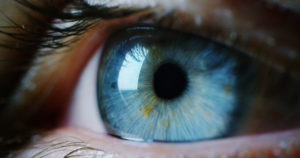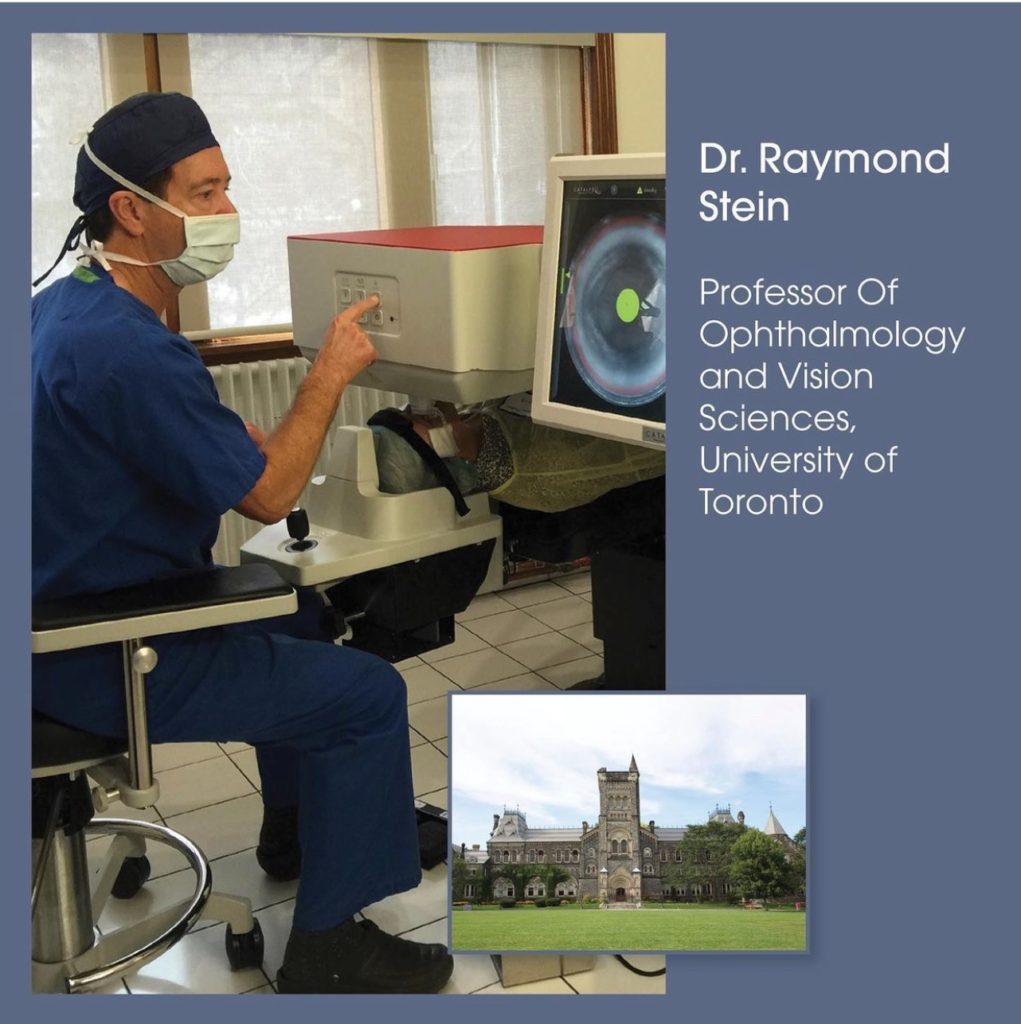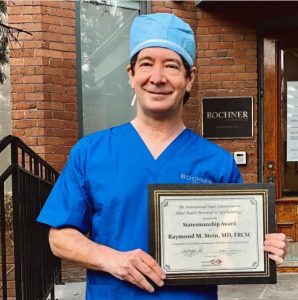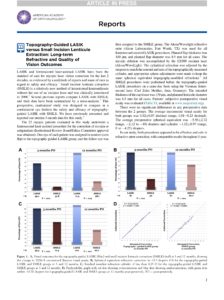
Dr. Samuel Markowitz, a specialist in Low Vision Rehabilitation and our associate and collaborator offered the following with regards to our common experience with Clear K CPV:
Corneal PhotoVitrification (CPV) is the latest of promising therapies approved recently in Canada suitable for application in cases with dry AMD. CPV is in essence a corneal photorefractive procedure which results in structural changes in the superficial cornea which in turn redirect light passing thru the cornea towards the peripheral retina. In essence the net result of the procedure is similar to the effect of prisms on incoming light into the retina. The wavefront aberrations profile of the cornea following CPV is best described as dominated by a quadrafoil pattern which can be recorded with corneal topography. Each of the 4 quadrants of the pattern produces a prismatic effect on incoming light towards the periphery of the retina.
This technology embraces the modern understanding of residual visual abilities in those who lost central vision due to disease and the ensuing rehabilitation process. Modern low vision rehabilitation in the event of macular vision loss is based on identification of Preferred Retinal Loci present on the retina and attempts to redirect the incoming light into the eye towards the existing PRL. There is a long time honored experience in this aspect. It was and is still based on eye movement training and also on use of prisms to redirect light to PRLs. Results from this methodology of treatments are published in the literature and proved to be beneficial in improving vision in those who lost macular vision. CPV is another development in the same methodology which included training of eye movements and use of prisms. It also shows already same benefits as proven in the past with eye training methods and prisms.
In Toronto, we have experience up to date with about 20 cases (about 35 eyes) which were treated with CPV. About 18 patients saw an improvement in visual functions and noted improvements in various activities of daily living and expressed various degrees of satisfaction following the treatment. 2 cases saw no vision related improvements after treatment. There were no downward side effects following the treatment.
Given that there are no other treatments today for dry AMD, our preliminary conclusion is that CPV offers a significant benefit to those treated translated easily in significant improvements in quality of life. Also with the advent of newer technologies it has to be emphasized that CPV is not applied to and not structurally affecting the retinal tissue.




